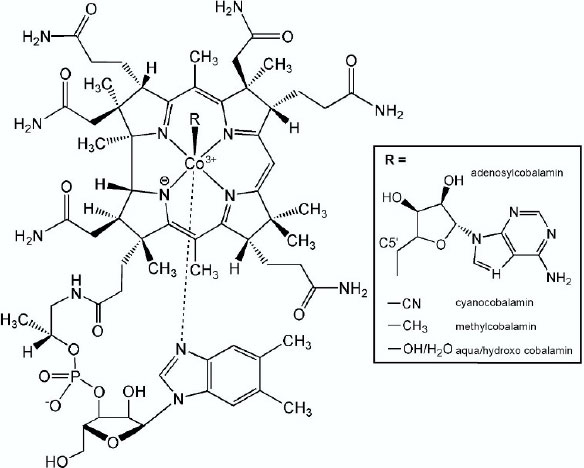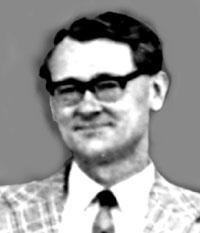The inorganic chemistry of vitamin B12
- Wits Chemistry
Cobalt is found at the active site of several key enzymes. But why does a relatively rare and inert metal play such an important role in our metabolism?
This has been a question of interest to biochemists, inorganic chemists, and coordination chemists for decades. Read about Helder Marques’ life-long fascination with the inorganic chemistry of vitamin B12.
 Some metal ions like Fe3+/Fe2+ and Cu2+/Cu+ are found as the redox centres in many enzymes while others like Zn2+ play a vital role as structural anchors for enzymes, proteins and DNA. They are examples of essential trace elements or micronutrients.
Some metal ions like Fe3+/Fe2+ and Cu2+/Cu+ are found as the redox centres in many enzymes while others like Zn2+ play a vital role as structural anchors for enzymes, proteins and DNA. They are examples of essential trace elements or micronutrients.
Much less common is Co. While a number of Co-containing enzymes are known, the most important function of Co is in the cobalt corrinoids, often called the cobalamins, derivatives of vitamin B12. A deficiency in B12 leads to a severe condition known as pernicious anaemia.
Co is not a common element in the earth’s crust (<0.001%). Its most stable oxidation state is Co3+ and this (together with Cr3+) is the classic example of a kinetically inert metal ion. That nature should have retained a supposedly inert metal ion as the active site of several key enzymes through the course of evolution is surprising. And why is a question that has engaged the attention of biochemists, inorganic chemists and coordination chemists since the elucidation of its structure by Dorothy Hodgkin in 1956.
The best known function of the cobalt corrinoids is in folate and fatty acid metabolism. They are essential micronutrients in animals, including humans, but not in plants or fungi. But the function of the corrinoids is diverse and continues to be elucidated. Surprising new discoveries include their role as a photo-receptor in light-dependent gene regulation and in modulating the structure of microbial communities in the human gut.
Humans have two enzymes that require cobalamin: methylmalonyl CoA mutase, which requires adenosylcobalamin (AdoCbl), and converts methylmalonyl CoA into succinyl CoA, and methionine synthase, which requires methylcobalamin (MeCbl) and is required for recycling of tetrahydrofolate by means of methionine synthesis from homocysteine. B12 deficiency can result in damage to the myelin sheath of nerves because of the accumulation of methylmalonyl CoA, and megaloblastic anaemia because of an inability to regenerate tetrahydrofolate, which is required for thymine synthesis.
AdoCbl requires Co to cycle between Co3+ and Co2+; MeCbl sees the metal cycle between Co3+ and Co+. The structure of the corrin, the ligand that occupies the four equatorial coordination sites of the metal, must be vital to convert a normally inert metal ion into a redox-competent cofactor in the B12-dependent enzymes.
This is the central question of the inorganic chemistry of the cobalt corrinoids. The early work in the field was captured in a seminal text, The Inorganic Chemistry of B12 by John Pratt in 1972. Pratt was introduced to B12 chemistry while a student at Oxford, then worked at ICI in the UK before arriving at Wits in 1974 as our first Professor of Inorganic Chemistry.
Helder Marques was introduced to B12 chemistry while working as a vacation student in Pratt’s lab in 1975, and has retained an enduring interest in its chemistry. He has recently reviewed and summarised the literature of the inorganic chemistry of B12 and (as a tribute to Pratt who passed away in 2018 at the age of 84) published this as a review in the Journal of Inorganic Biochemistry (“The inorganic chemistry of the cobalt corrinoids – an update”, J. Inorg. Biochem., 242, 112154, 2023)
 |
|---|
| Professor John M. Pratt |

